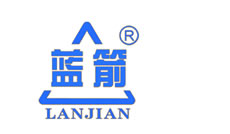| Heat Resistant Conveyor Belt |
|
| Author:admin Date:2015-11-22
Views:3761 |
 |
 |
|
|
|
|
Product Description |
|
The belt carcass of this product is EP fabric(D.S.EP or CC56) of high modulus,low shrink,and high breaking tensile strength.Cover rubber of this product uses SBR, CR, EPDM rubber or Chloroprene rubber that has very good high temperature resistance.The belt is made with extra care after mixing rubber with high temperature resistant materials, assembling and vulcanizing.
The carcass of this product has very high adhesion after the special treatment of coating and shaping.Under normal working temperature of below 180℃, the belt is low in elongation, excellent in anti-abrasion,and can bear 250℃(in the cooling condition, 300℃-600℃) high temperature for a short time.The belt is suitable for use in cement,metallurgical and steel industry. |
|
|
Features & Advantages |
|
Features & Advantages:
1、Heat-resistant cover resists cracking and hardening
2、High-temperature resistance to tearing and abrasion
3、High strength carcass construction
4、The carcass with heat-resistant material |
|
|
Application Fields |
|
Metallurgy, steel plant, building material and construction, energy, chemical,machinery equipment and port. |
|
|
Tensile Strength & Width |
|
Tensile Strength:300~3200 N/mm Width:500~2400 mm |
|
|
Features and implementation standards |
|
Characteristic:
Be conducted by cotton canvas or polyester canvas of high content of cotton and cover rubber of heat resistant.
Advantages and usage:
Be used to convey hot materials or elevated temperature materials such as metallurgy, casting, coking,building material, chemical and so on. Because the cover rubber is of a certain heat resistance.
Standard: GB/T20021-2005《High Temperature Resistance Conveyor Belt》 |
|
|
Layer bonding strength of different grades of heat resistance in the tropics at their respective temperatures |
|
| Item |
Between Piles |
Between Cover and Belt Carcass |
| Average of all samples |
2.1 |
2.1 |
|
The all samples' lowest peak value is not less than |
1.6 |
1.6 | |
|
|
In the fabric with natural fiber to do with the core, with the interlayer adhesion strength |
|
| Item |
Between Piles |
Between Cover and Belt Carcass |
| Average of All Samples |
3.2 |
2.7 |
| The all samples' lowest peak value is not less than |
2.7 |
2.2 | |
|
|
Abrasion between Piles |
|
| Item |
Between Piles |
Between Cover and Cloth |
| Cover Thickness≦1.5mm |
Cover Thickness >1.5mm |
| Chemical Fiber Filement Fabric Carcass |
Longitudunal Average Value ≥,N/mm |
4.5 |
3.5 |
3.5 |
| Longitudinal Lowest Peak,N/mm |
3.9 |
2.9 |
2.9 | |
|
|
After the high temperature resistance belt heating test,its physical and mechanical performance should be in accordance with the provisions below. |
|
| Item |
Type |
| T1 1 |
T2 2 |
T3 3 |
T4 4 |
| Variation Range |
| Hardness |
Differences before and after Aging |
+20 |
+20 |
±20 |
±20 |
| Maximium Value after Aging |
85 |
| Tensile Strength |
Change Rate after Aging |
12 |
10 |
5 |
5 |
| The Minimum Value after Aging |
-25 |
-30 |
-40 |
-40 |
| Elongation |
Performance Change Rate |
-50 |
-50 |
-55 |
-55 |
| Minimium Value after Aging |
200 |
200 |
180 |
180 | |
|
|
Physical Performance |
|
| Item |
| Hardness |
Differences Before and after Aging(IRHD) |
±20 |
| After Aged Maximum Value(IRHD) |
85 |
| Tensile Strength |
The Performance Rate of Change Reduces,% |
-40 |
| After Aged Minimum Value,Mpa |
5 |
| Elongation |
Change Rate of Performance Reduces,% |
-55 |
| After Aged Minimum Value,% |
-180 | |
|
|
Adhesion strength between layers of fabric with natural fibers |
|
| Item |
Between Piles |
Between Cover and Belt Carcass |
| Average of All Samples |
4.5 |
3.5 |
| The all samples' lowest peak value is not less than |
3.9 |
2.9 | |
|
|
